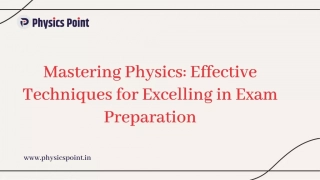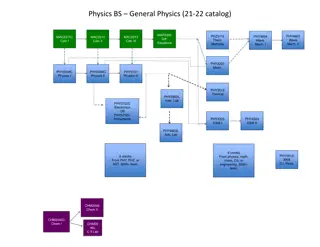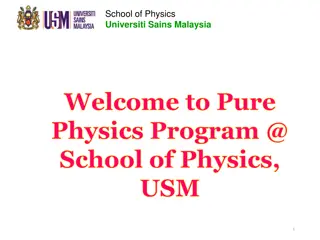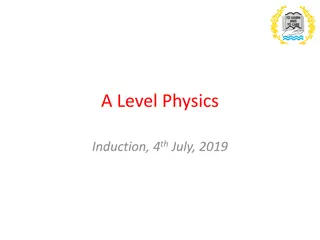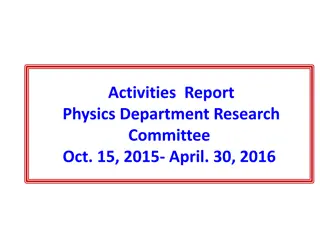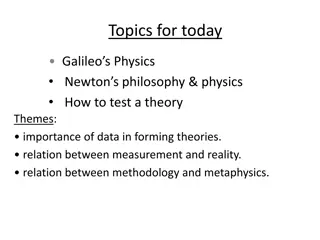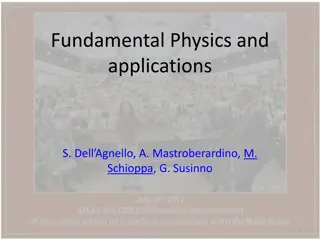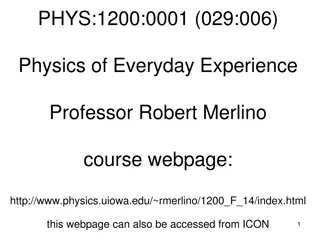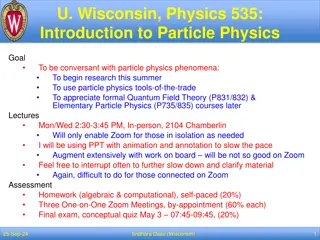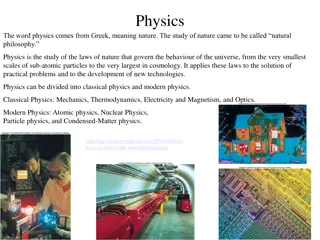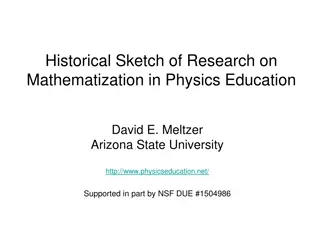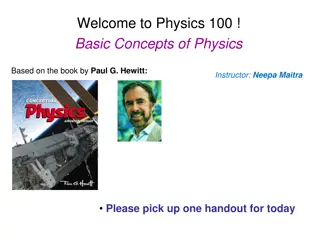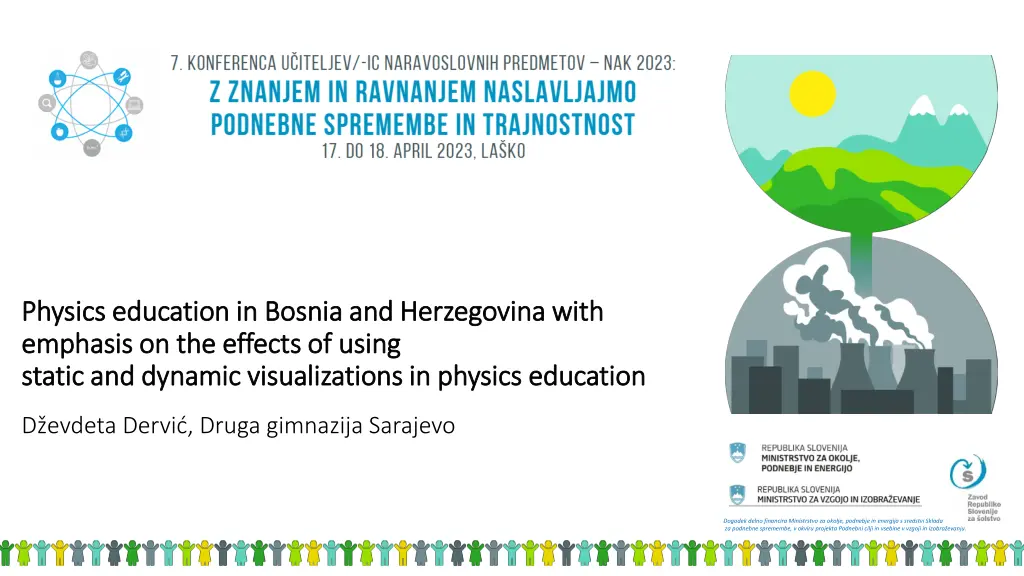
Visualizations in Physics Education: Enhancing Understanding
Explore the impact of using static and dynamic visualizations in physics education in Bosnia and Herzegovina. Discover the obstacles faced and initiatives taken to improve learning conditions. Dive into the effectiveness of multimedia learning and cognitive load theory in high-school physics education.
Download Presentation

Please find below an Image/Link to download the presentation.
The content on the website is provided AS IS for your information and personal use only. It may not be sold, licensed, or shared on other websites without obtaining consent from the author. If you encounter any issues during the download, it is possible that the publisher has removed the file from their server.
You are allowed to download the files provided on this website for personal or commercial use, subject to the condition that they are used lawfully. All files are the property of their respective owners.
The content on the website is provided AS IS for your information and personal use only. It may not be sold, licensed, or shared on other websites without obtaining consent from the author.
E N D
Presentation Transcript
Physics education in Bosnia and Herzegovina with Physics education in Bosnia and Herzegovina with emphasis on the effects of using emphasis on the effects of using static and dynamic visualizations in physics education static and dynamic visualizations in physics education D evdeta Dervi , Druga gimnazija Sarajevo Dogodek delno financira Ministrstvo za okolje, podnebje in energijo s sredstvi Sklada za podnebne spremembe, v okviru projekta Podnebni cilji in vsebine v vzgoji in izobra evanju.
Physics as a school subject elementary school high school 7th grade (1 lesson/week) 1st grade 2nd grade 3rd grade 4th grade 2 lessons/week 2 lessons/week 3 lessons/week (optional) 3 lessons/week (optional) gymnasium 8th grade (2 lessons/week) 2 lessons /week 2 lessons /week 2 lessons /week 2 lessons /week technical schools 9th grade (2 lessons/week) 2 lessons /week 2 or 3 lessons /week professional schools
obstacles improvement number of initiatives to improve the conditions for learning physics increasing funds for the purchase of equipment insufficient support for students (insufficiently educated teaching staff) reorganizing the school schedule to better allocate time to different subjects and weights insufficient equipment in the classrooms individual steps by physics teachers (creating engaging and interactive lessons, meeting regularly with colleagues to share experiences and ideas, and using online resources to supplement training,...) not interesting and interactive lessons
Visualisations in Physics education Visualisations in Physics education Kinematics and optics High-school students (15-16 years old) Multimedia learning Stimulating learning environment Cognitive load theory
The first study The first study to compare the impact of simulations, sequences of printed simulation frames and conventional static diagrams on students' understanding of one-dimensional kinematics pre-post quasi-experiment students who learned from simulations or from printed sequences of simulation frames significantly outperformed their peers who learned one-dimensional kinematics from conventional static diagrams more positive students' attitudes toward kinematics instruction
The The second second study study to explore the effect of teaching methods (traditional, static diagrams and interactive computer simulations) on student s understanding of lenses pre-post quasi-experiment statistically significant differences between the traditional teaching methods and simulation-based method comparison between the traditional teaching method and static diagrams statistically non- significant the interaction between the type of cognitive load and teaching method proved to be statistically significant statistically significant effect has been found for the relevant cognitive load comparison between the traditional and simulation-based approaches.
The The third third study study to investigate the factors that potentially influence the effectiveness of simulation-based learning (the effectiveness of teacher-centered and student-centered Physlet-based instruction about one-dimensional kinematics) students from the TC approach outperformed their peers when it comes to conceptual understanding of kinematics students from the students-centered approach were more successful in solving quantitative problems The results of our study support the idea that a progression from TC to SC approach may be optimal for learning novel concepts.
Conclusion Conclusion Using visualizations in physics education Cognitive load Multimedia learning environment Progression from TC to SC approach
Thank you Thank you

